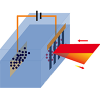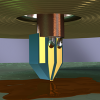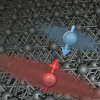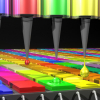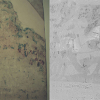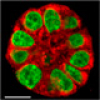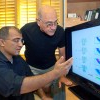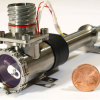Spectroscopy News
Agilent Technologies and the Bioprocessing Technology Institute (BTI), a research institute of Singapore’s Agency for Science, Technology and Research (A*STAR), have announced that they will collaborate on new analytical approaches to analysing specific protein-linked sugar compounds.
Agilent Thought Leader Award supports search for biomarkers to better predict side effects of new medicines.
Berkeley Lab researchers’ novel diffraction spectroscopy technique will provide insight to chemical processes at important battery interface.
NIST has made electron spin resonance useful for exploring tiny objects for the first time, potentially enabling the decades-old technique to spot defects on computer chip surfaces or view the workings of proteins on the surface of cells.
Archaeologists examining late period Mayan containers have identified nicotine traces from a codex-style flask, revealing the first physical evidence of tobacco use by ancient Mayans. The study published in Rapid Communications in Mass Spectrometry (doi: 10.1002/rcm.5339) reveals the flask is marked with Mayan hieroglyphics reading, “y-otoot ’u-may” (“the home of its/his/her tobacco”), making it only the second case to confirm that the text on the exterior of a Mayan vessel corresponds to its ancient use.
A new type of terahertz sensor, that is much faster than competing technologies used to detect and identify hidden objects, has been developed by scientists at the University of Warwick, UK.
As part of around €24.5 million in funding for the next three years, the Deutsche Forschungsgemeinschaft (DFG, German Research Foundation) will establish one new Clinical Research Unit and nine new Research Units. As all DFG Research Units, the new units will collaborate interdisciplinarly and span multiple locations.
Among the new Research Units are three that may be of interest to readers (in alphabetical order by Host University).
Terahertz spectroscopy enables the measurement of fundamental magnetotransport details and provides basis for advanced nanoelectronics.
New spectrometer based on quantum dots is small enough to function within a smartphone, enabling portable light analysis.
Super-eruptions are not the only type of eruption to be considered when evaluating hazards at volcanoes with protracted eruption histories, such as the Yellowstone (Wyoming), Long Valley (California), and Valles (New Mexico) calderas in the USA. There have been more than 23 effusive eruptions of rhyolite lava at Yellowstone since the last caldera-forming eruption ~640,000 years ago, all of similar or greater magnitude than the largest volcanic eruptions of the 20th century.
The ravages of time have severely damaged the wall and ceiling frescos in the upper cloister of Brandenburg Cathedral.
Hamamatsu have introduced their first high-brightness deuterium (H2D2) light source, with a deuterium lamp that emits UV light at an intensity six times higher than their conventional L2D2 range of lamps.
BaySpec’s OCI-UAV is an ultra-compact version of its OCI-Series Hyperspectral Imagers.
Perception Studio is a software suite for hyperspectral data acquisition and processing from Perception Park.
Researchers from Purdue University in the USA have created a new imaging technology based on Raman spectroscopy that reveals subtle changes in breast tissue, representing a potential tool to determine a woman's risk of developing breast cancer and to study ways of preventing the disease.
Researchers have used mass spectrometry imaging to uncover exactly how a human egg captures an incoming sperm to begin the fertilisation process.
A team of chemists from the University of Seville, Spain, has managed to distinguish between different kinds of tea leaves on the basis of their mineral content and by using artificial neural networks.
Europe is getting ready for its first unmanned visit to the surface of Mars. The first European Mars Rover on a joint mission of the American and European space agencies, NASA and ESA, will take off in 2018. The 250 kg Rover will roll over the surface of Mars at a speed of 100 m per hour. While doing so, it will inspect the surface and gather up ground and rock samples, some of them up to 2 m deep. The main goals of the so-called EXOMARS mission are to search for traces of former or present life on the earth-like planet, and to prepare for the arrival of a manned Mars landing.

